1962 — The first session
From Oct. 11 to Dec. 8, the first session of the council meets, and work begins in 16 commissions for the 16 documents to ultimately come out of the Second Vatican Council.
These cover many topics, including the collegiality of bishops, the relationship with other religions and religious freedom, as well as a number of key themes in four documents called constitutions (more on those below).
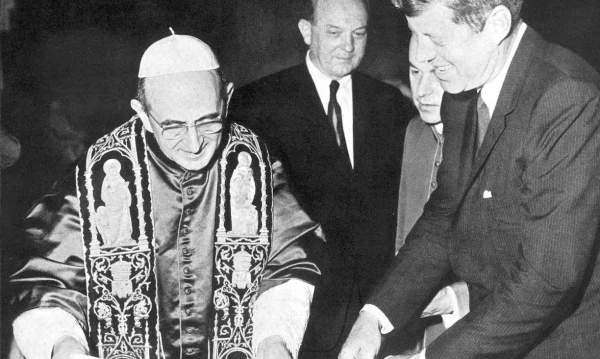 John F. Kennedy visits Pope Paul VI, July 2, 1963. Photo credit: Wikimedia Commons/Public domain
John F. Kennedy visits Pope Paul VI, July 2, 1963. Photo credit: Wikimedia Commons/Public domain
1963 — A new pope
(Story continues below)
On June 3, Pope John XXIII dies at age 81. Within three weeks, a successor, Pope Paul VI, is elected.
The new pontiff promptly announces the council will continue. Therefore, from Sept. 29 to Dec. 4, the second session gathers in Rome.
Just before, Paul VI also announces a reform of the Roman Curia.
Issued on Dec. 4, Sacrosanctum concilium, the Constitution on the Sacred Liturgy, calls for the use of Latin “to be preserved in the Latin rites” but also allows for the use of local — vernacular — languages in some areas.
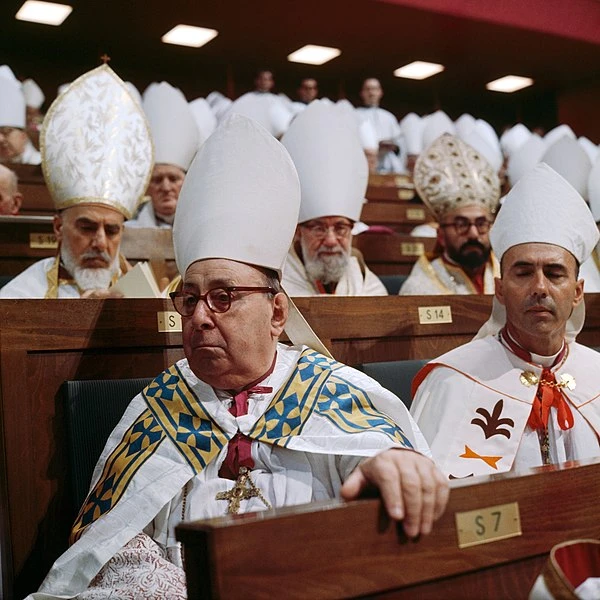 The council fathers seated during the Second Vatican Council, circa 1962-1965. Photo credit: Lothar Wolleh/Wikimedia Commons
The council fathers seated during the Second Vatican Council, circa 1962-1965. Photo credit: Lothar Wolleh/Wikimedia Commons
1964 — The Light of the Nations
From Sept. 14 to Nov. 21, the council fathers gather to continue their work.
On the final day of the year’s session, Lumen gentium, the Dogmatic Constitution on the Church, is issued, among other documents.
This text on the “Light of the Nations” proclaims that the laity “carry out for their own part the mission of the whole Christian people in the Church and in the world.”
Also on the final day, Nov. 21, Pope Paul VI announces that the eucharistic fast will be reduced to one hour.
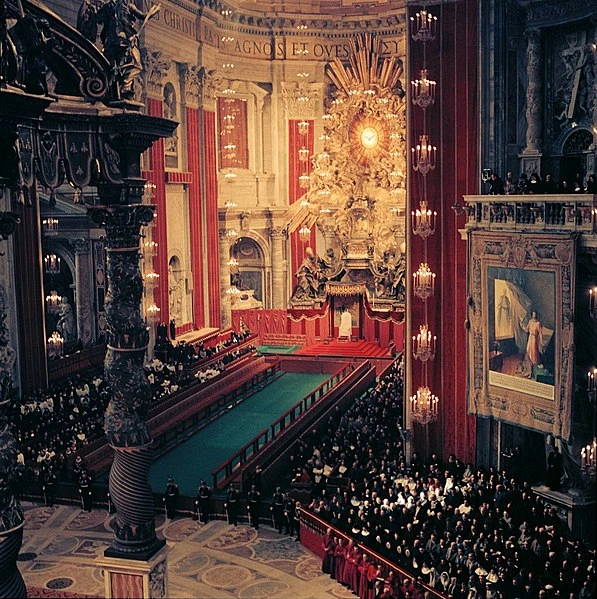 The Second Vatican Council. Photo credit: Lothar Wolleh/Wikimedia Commons
The Second Vatican Council. Photo credit: Lothar Wolleh/Wikimedia Commons
1965 — A solemn end
From Sept. 14 to Dec. 8 the fourth and final session of the council meets. During this session, several key documents are issued, including two more constitutions.
The Dogmatic Constitution on Divine Revelation, Dei verbum, asserts that “sacred tradition and Sacred Scripture … flowing from the same divine wellspring, in a certain way merge into a unity and tend toward the same end.”
Finally, the Pastoral Constitution on the Church in the Modern World, Gaudium et spes, is the last document promulgated during the council. Mentioning the word “world” 124 times and the word “Church” 140 times, it explains that “the Church has always had the duty of scrutinizing the signs of the times and of interpreting them in the light of the Gospel” and asserts “the effort to establish a universal brotherhood is not a hopeless one.”
On the final day, Dec. 8, 1965, the Second Vatican Council solemnly concludes. An extraordinary Jubilee Year is proclaimed to familiarize the faithful with the teachings of the council.
AC Wimmer is the News Editor for Europe and Asia at EWTN News. The multilingual Australian, raised in Bavaria and South Africa, served as editor-in-chief of several news media outlets. A graduate in Philosophy and Chinese Studies from the University of Melbourne, the veteran journalist is a former Honorary Research Fellow in Communications at his alma mater and served on the Board of Caritas in Munich.
 Pope John XXIII’s coronation. Photo credit: Maryknoll Fathers, Maryknoll, N.Y./Wikipedia
Pope John XXIII’s coronation. Photo credit: Maryknoll Fathers, Maryknoll, N.Y./Wikipedia


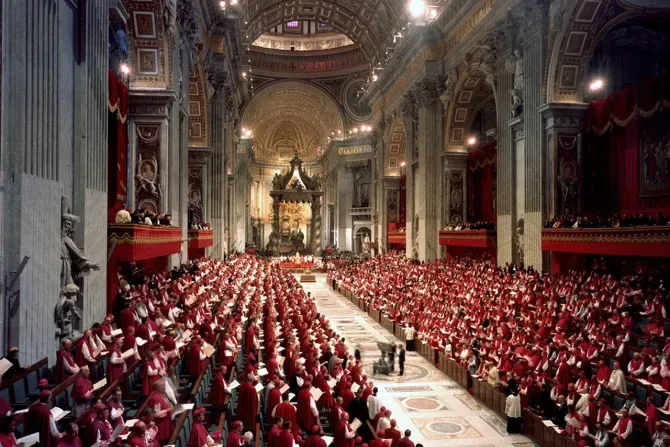
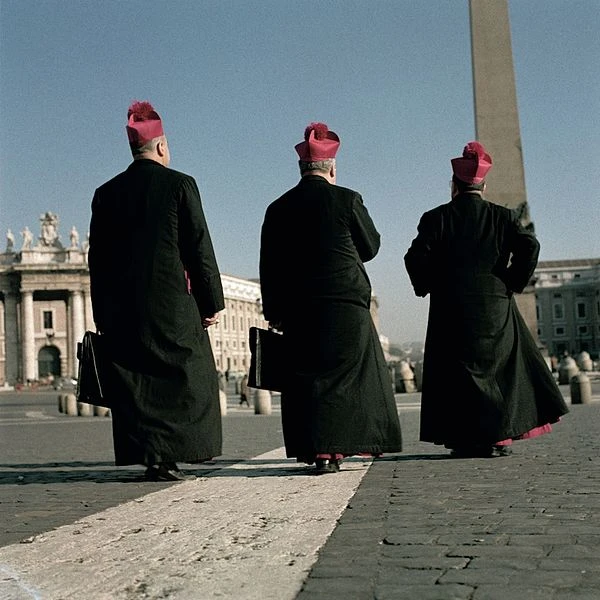 Second Vatican Council cardinals leaving St. Peter’s, circa 1963-1965. Photo credit: Lothar Wolleh/Wikimedia Commons
Second Vatican Council cardinals leaving St. Peter’s, circa 1963-1965. Photo credit: Lothar Wolleh/Wikimedia Commons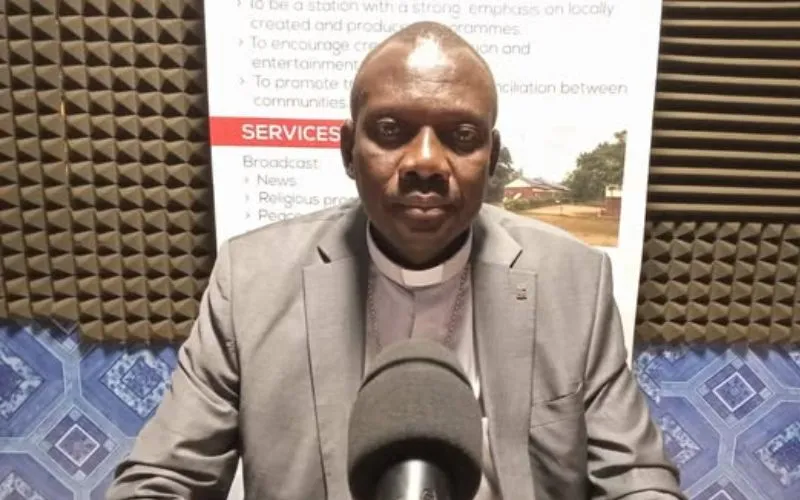
 Grand procession of the council fathers at St. Peter’s Basilica, Oct. 11, 1962. Photo credit: Peter Geymayer/Wikimedia Commons/Public domain
Grand procession of the council fathers at St. Peter’s Basilica, Oct. 11, 1962. Photo credit: Peter Geymayer/Wikimedia Commons/Public domain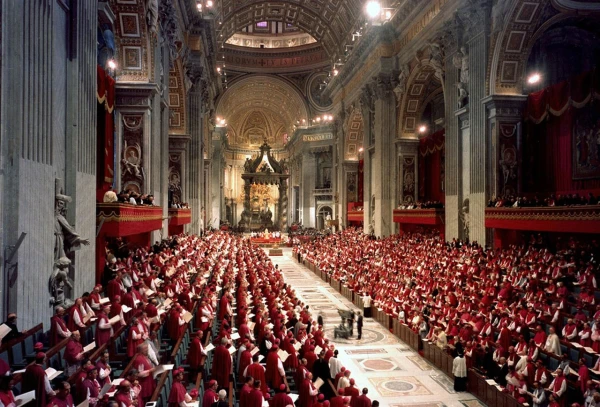 Vatican II in session, circa 1962-1965. Photo credit: Catholic Press Photo/Wikimedia Commons
Vatican II in session, circa 1962-1965. Photo credit: Catholic Press Photo/Wikimedia Commons John F. Kennedy visits Pope Paul VI, July 2, 1963. Photo credit: Wikimedia Commons/Public domain
John F. Kennedy visits Pope Paul VI, July 2, 1963. Photo credit: Wikimedia Commons/Public domain The council fathers seated during the Second Vatican Council, circa 1962-1965. Photo credit: Lothar Wolleh/Wikimedia Commons
The council fathers seated during the Second Vatican Council, circa 1962-1965. Photo credit: Lothar Wolleh/Wikimedia Commons The Second Vatican Council. Photo credit: Lothar Wolleh/Wikimedia Commons
The Second Vatican Council. Photo credit: Lothar Wolleh/Wikimedia Commons


